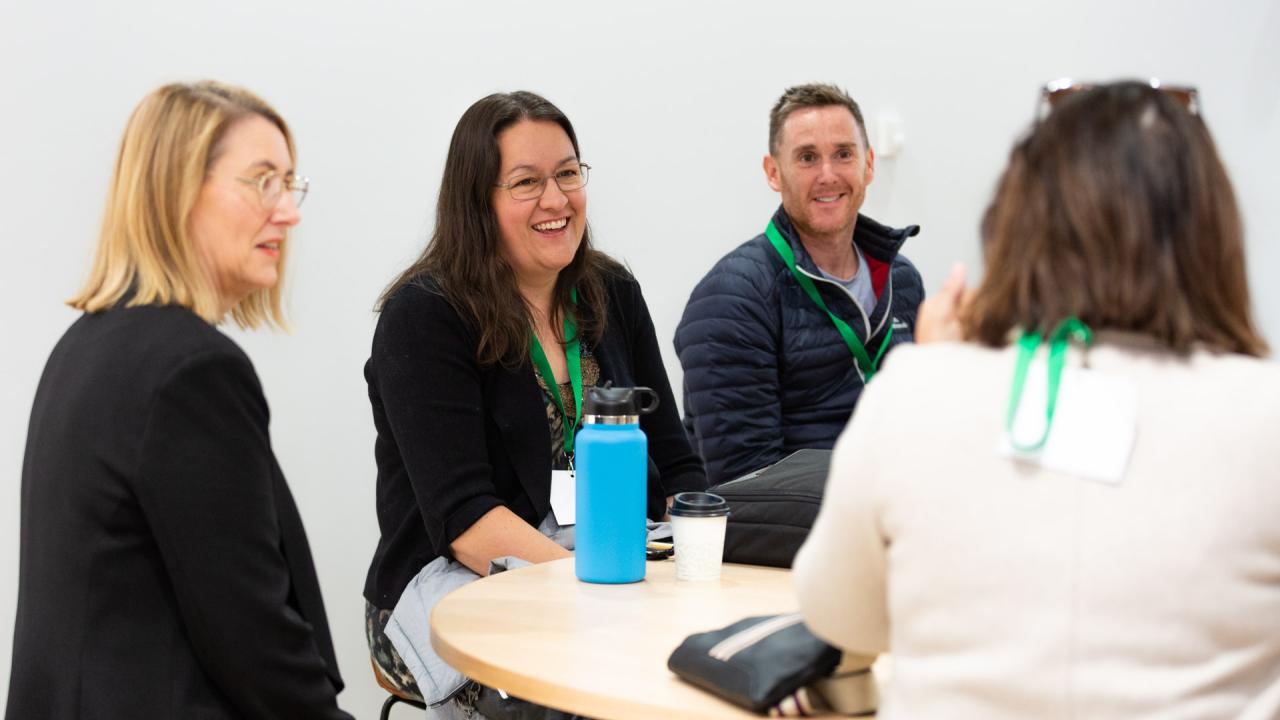Communities of Practice

The best education systems in the world are highly networked. These systems have principals who are well connected to their peers through active partnerships and learning networks of schools. These networks are known as Communities of Practice (CoP).
The CoP approach involves educational leaders working collaboratively to take collective responsibility for improving the outcomes and wellbeing of each and every student in Victoria.
When leaders work together they can prioritise areas for improvement, share their knowledge, and learn together to strengthen their leadership practice.
Effective CoP are characterised by an unrelenting focus on improvement, a strong culture of transparency, reflective professional inquiry and evidence-based decision making. They share a long-term vision for learning improvement through collaborative conversations. They have the ability to support a cultural shift and build trust in networks and across the system.
The power of collaboration
Collaboration is the way forward for our schools. Research shows that effective school networks that focus on a collaborative effort to improve student outcomes can make a difference.
The CoP approach is a powerful way to lift student performance, reduce disadvantage and address the high variability of student outcomes across schools and classrooms. It puts students at the centre of decision making.
The effectiveness and power of CoP is evident in the way principals supported each other during the COVID-19 pandemic in 2020 and 2021. The groundwork to implement CoP helps networks to flourish, build trust, confidence and courage, and work together in the interests of the children and young people they serve.
Victorian schools leading the way
Victorian school networks have adopted this unique CoP approach to support each other and work together to improve student outcomes. They have formed productive and purposeful collaborations that are continually progressing and strengthening.
These communities are centred around sharing resources and knowledge. A strong culture of transparency provides the opportunity for regular sharing and analysis of data. For some communities, this involves classroom visits to each other's schools to provide feedback and evidence to inform planning and build teaching practice and expertise.
These communities foster strong engagement and collaboration with external agencies, such as local organisations, tertiary institutions and businesses, to bring communities together to focus on students' wellbeing and learning outcomes.
Networks using a CoP approach focus on implementing the FISO with support from Senior Education Improvement Leaders , Area Executive Directors and multidisciplinary teams.
Network chair
Network chairs play a key system leadership role in enabling school leaders to collaborate and take collective responsibility for all learners in their network. They are key to using a robust, evidence-informed approach and improving student outcomes.
Network executive
Network executives support the network chair in their system leadership role. They model collaboration and co-learning and provide a channel for succession planning.
Senior Education Improvement Lead (SEIL)
SEILs are a conduit and play an important role in facilitating, connecting, integrating and challenging to ensure effective network practice. They help networks adopt an effective CoP approach, and ensure the network focuses on implementing the FISO.
SEILs play a variety of roles in networks, depending on the network’s self-assessed needs and FISO focus area priorities, including:
- Connector – broker relationships to help a network nurture its strengths, bridge areas of development and pursue greater opportunities.
- Integrator – maintain information-sharing relationships with other networks across the state.
- Facilitator – focus on enabling collaboration between the network’s members, and stimulates interest within the network to ensure member engagement.
- Challenge partner – helps the network members to challenge each other to improve performance and continually challenges the entire network’s performance.
- Conduit – act as a bridge between the central office and the network, enabling a two-way flow of information and feedback to align and recognise the network’s efforts and achievements.
The Academy supports Communities of Practice in Victoria by providing resources and information to help networks plan, implement and assess their CoP approach.
Network chairs and SEILs have the opportunity to participate in our WISE: System Leaders program, and a range of other professional learning to resource and enable the collaborative efforts of networks to achieve their goals and priorities.



